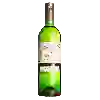
Winery Vins Fins du PerigordChâteau Le Vigneau Bergerac Sec
This wine generally goes well with
Details and technical informations about Winery Vins Fins du Perigord's Château Le Vigneau Bergerac Sec.
Discover the grape variety: Tressailler
According to published genetic analyses, it is the result of a cross between Pinot Blanc and Gouais Blanc, which is registered in the Official Catalogue of Wine Grape Varieties, list A1.
Informations about the Winery Vins Fins du Perigord
The Winery Vins Fins du Perigord is one of of the world's greatest estates. It offers 14 wines for sale in the of Bergerac Sec to come and discover on site or to buy online.
The wine region of Bergerac Sec
The wine region of Bergerac Sec is located in the region of Bergerac of South West of France. Wineries and vineyards like the Château Tour des Gendres or the Château Barouillet produce mainly wines white, red and sweet. The most planted grape varieties in the region of Bergerac Sec are Muscadelle, Cabernet-Sauvignon and Merlot, they are then used in wines in blends or as a single variety. On the nose of Bergerac Sec often reveals types of flavors of citrus, pear or oil and sometimes also flavors of non oak, floral or cheese.
The wine region of South West
The South-West is a large territorial area of France, comprising the administrative regions of Aquitaine, Limousin and Midi-Pyrénées. However, as far as the French wine area is concerned, the South-West region is a little less clear-cut, as it excludes Bordeaux - a wine region so productive that it is de facto an area in its own right. The wines of the South West have a Long and eventful history. The local rivers play a key role, as they were the main trade routes to bring wines from traditional regions such as Cahors, Bergerac, Buzet and Gaillac to their markets.
The word of the wine: Performance
Quantity of grapes harvested per hectare. In AOC, the average yield is limited on the proposal of the appellation syndicate, validated by the Inao. The use of high-performance plant material (especially clones) and better control of vine diseases have increased yields. This is not without consequences on the quality of the wines (dilution) and on the state of the market (too much wine). We must not over-simplify: low yields are not synonymous with quality, and it is often in years with generous harvests that we find the greatest vintages (1982 and 1986 in Bordeaux, 1996 in Champagne, 1990 and 2005 in Burgundy...).














